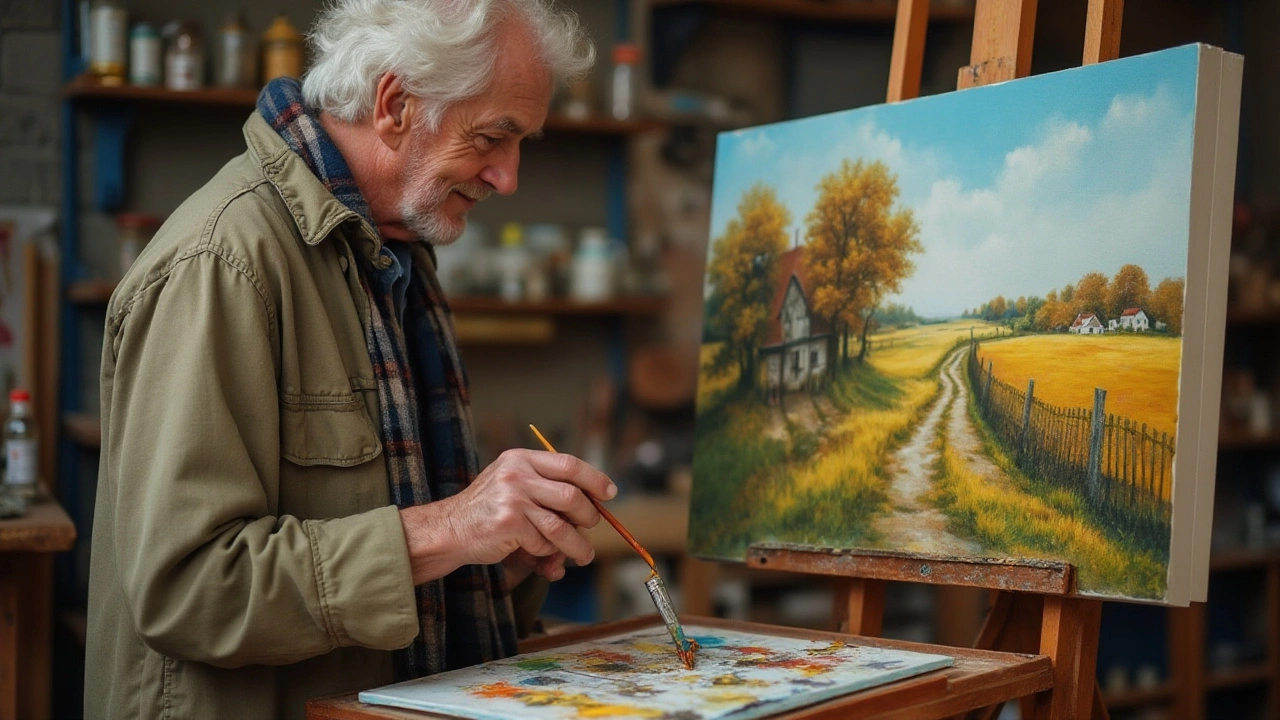Paint Texture Made Simple: Quick Ways to Add Depth
Ever wonder why some paintings feel like you could reach out and touch them? That’s the power of texture. Adding paint texture doesn’t have to be a big, messy project. With just a few tools and a couple of easy moves, you can give any piece more life. Below you’ll find the basics, the best materials, and three go‑to techniques that work for oil, acrylic or even watercolor.
Tools and Materials for Texture
First, pick the right gear. A palette knife is a must‑have – it lets you splash, scrape and layer paint without brushes. If you like softer effects, a stiff bristle brush or a cheap sponge works great. For a more industrial look, try sand, sawdust or even crumpled tissue paper. All you need is something you can stick into wet paint and press down gently.
Don’t forget your base. A thin wash of flat colour gives texture a place to sit. In our post “Best Colours for Landscape Painting” we talk about choosing the right hue before you start building texture. Start with a light layer, let it dry a bit, then add the texture on top. That way the texture stays visible and doesn’t just blend into the background.
Simple Techniques to Build Texture
1. Knife Scraping – Scoop a small amount of paint onto the canvas, then drag the edge of the palette knife across it. You’ll see ridges form instantly. Try this for rocks, tree bark or the rough surface of a brick wall. The “How to Fix Mistakes in Oil Painting” article shows how you can scrape away unwanted layers without ruining what’s underneath, which works the same for creating texture.
2. Wet‑on‑Wet Rubbing – While the paint is still wet, rub a crumpled paper towel or a piece of cloth over it. The movement pulls paint into random patterns that look like sand or plaster. It’s perfect for foggy landscapes or soft clouds. The key is to keep the pressure light; too much and you’ll just erase the colour.
3. Add‑In Materials – Mix a spoonful of sand or powdered charcoal right into the paint. When you apply it, the particles stay where you place them, giving a gritty feel. This works especially well in “Most Modern Art Styles” where artists love mixing media. Just remember to seal the finished piece with a clear varnish to protect the added material.
These three tricks cover most texture needs. If you want more ideas, check out our post “Abstract Painting: How to Begin Without Fearing the Blank Canvas.” It shows how to combine texture with colour to make a strong visual impact.
Remember, texture is about feeling, not perfection. Play around, make mistakes, and enjoy the process. The next time you pick up a brush, think about how a little raised paint can turn a flat picture into something you can almost feel.

31 Oct 2024
Linseed oil is a staple in the art of oil painting for its ability to alter paint texture and drying time. This article delves into why artists choose linseed oil as a medium, exploring its benefits and the impact on both color vibrancy and longevity. From its historical usage to practical tips on application, discover how linseed oil can transform your painting experience. Whether you're a seasoned artist or a beginner, understanding the relationship between linseed oil and oil paints can enhance your technique and results.
Continue reading...
